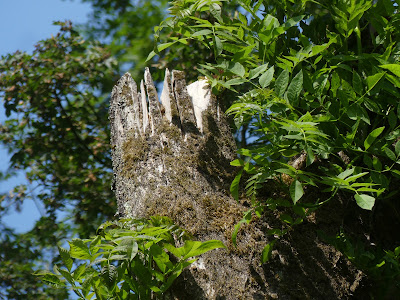We'll be starting at Abbotswood at 10.30 am, and returning about 1.00 pm.
This walk from Abbotswood to Wapley and back will look at Fruit and History, Pollinators and the Future.
- Find out what was here before the estates were built, and learn about the importance of "home orchards" to local people.
- Learn about the role of pollinators and the importance of encouraging small mammals.
- Find out what the Orchard for the Future project at Wapley Common is doing to encourage them.
- Discover why the railway was a key route to South Wales, its role in wartime and how it created an important wildlife corridor.







